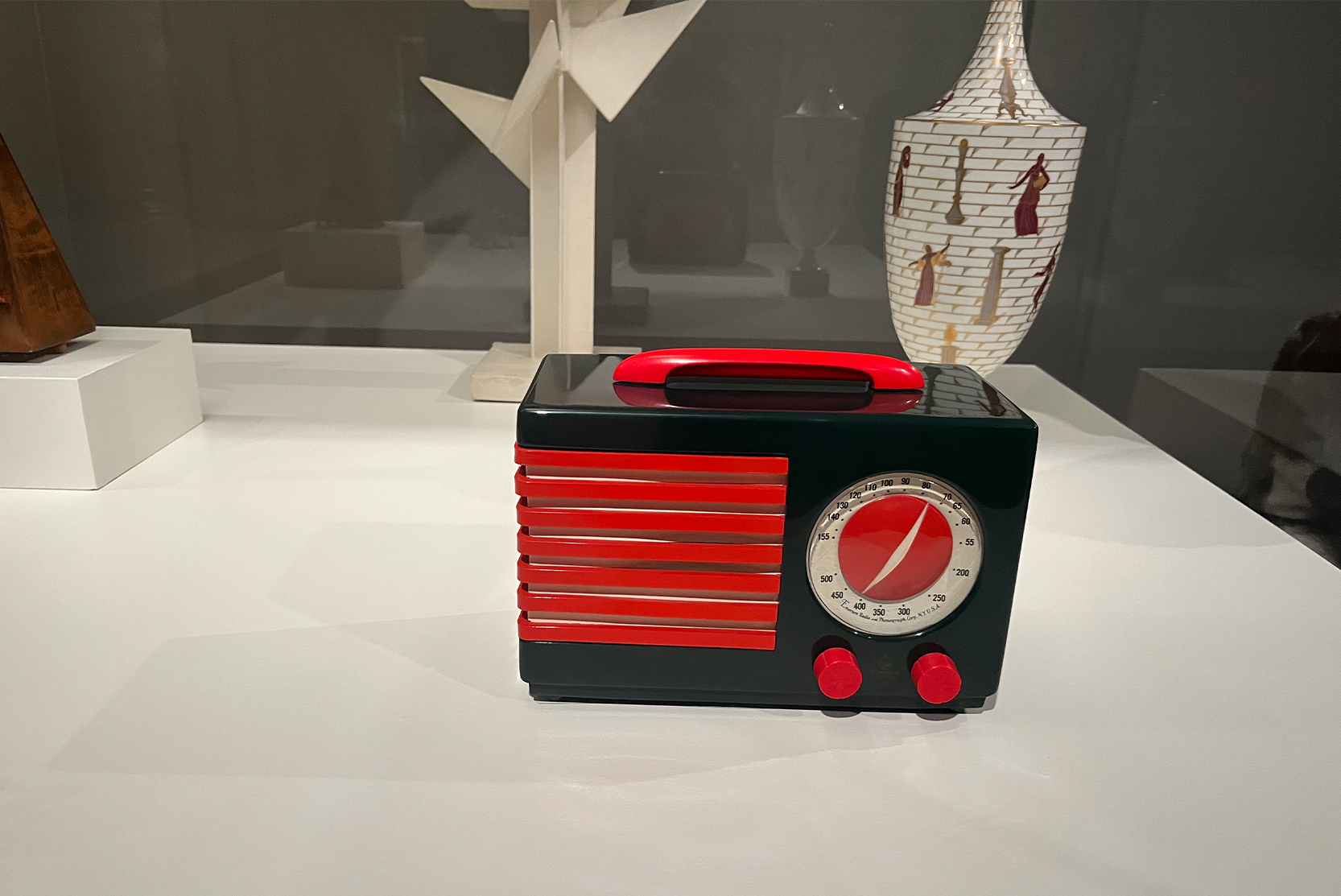
1940 Emerson Patriot Redux
Every once in a while, I try to summit Everest without the use of supplemental oxygen. And every time I try, my trusty Sherpa has to drag my ass back to base camp 4. Now, as you all know, I am about as likely to climb Everest as I am to climb a flight of stairs if an elevator is nearby - but it is sometimes how I feel when I try to write a story without adding a little bit of a lie.
To me, the lie is just that extra oxygen I need to get to the top.
The lie is the pair of scissors you use to snip off a part of the last piece of the puzzle so it fits just right.
This collection features stories about radios. In some, they play a major role. In others, they are a minor, although important, part. Once in a while, I may have tried to force an ill-fitting part of the puzzle.
The story I am about to tell has nothing to do with radios.
Not even a little bit.
So, it was not going to make it into the collection.
Then, last Thursday, the Eddie Murphy movie, Coming to America, was on TV. And it reminded me of this story.
This story which had no radios and no lies.
Now, I have no problem lying, but all around me I have seen other writers scale Everest without the aid of supplemental oxygen, so I wanted to try too.
Of course, I could tell the story without including a radio and even start a brand-new collection, but that really sounded like a lot of work, so first I decided to see if I could somehow fit a radio into the story.
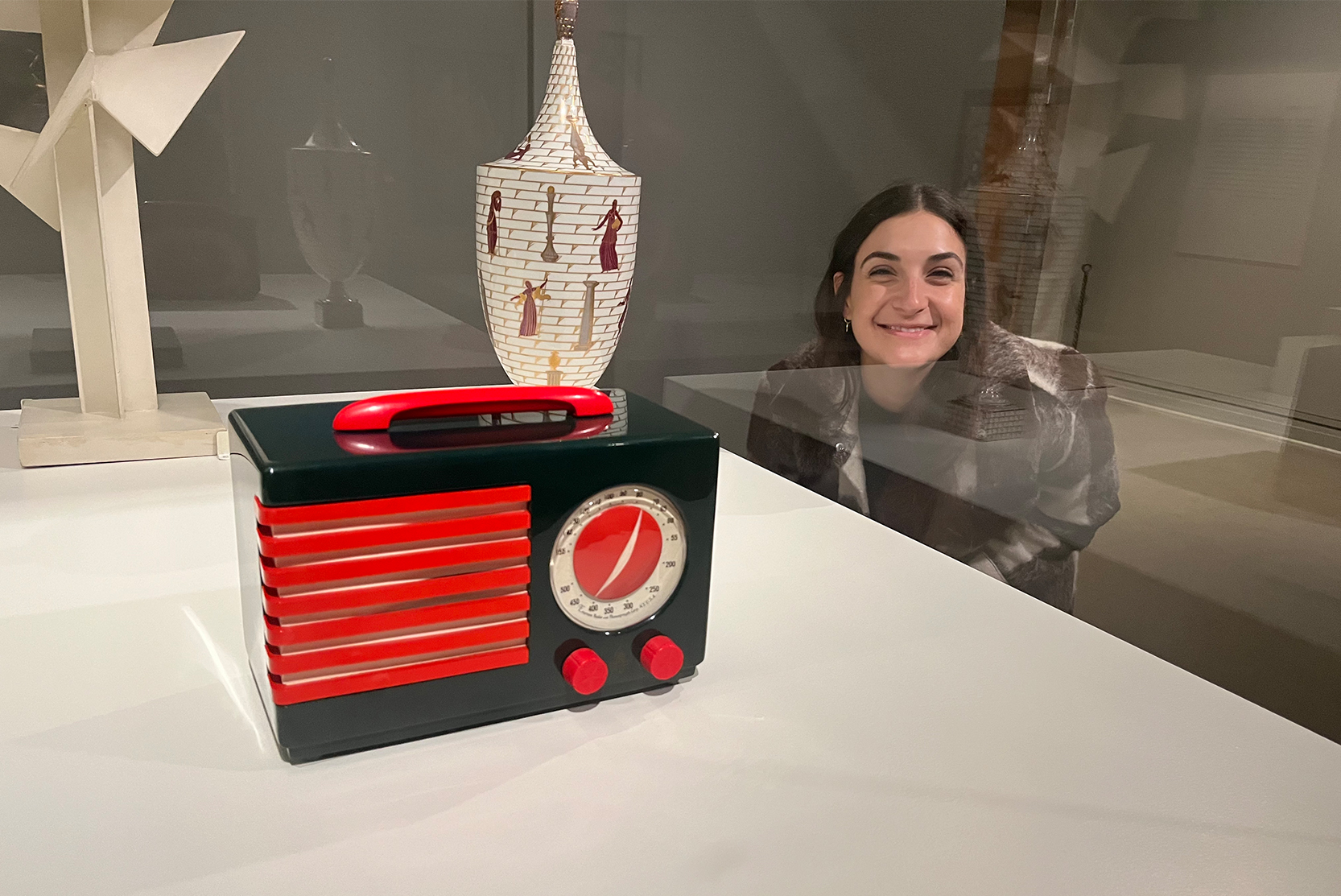
This is a picture of my niece Danna at the Metropolitan Museum in New York. She is posing behind a 1940 Emerson Patriot designed by Norman Bel Geddes. When I first started collecting radios, I asked Danna how many would be reasonable. She answered that any more than ten would be whack. If you haven’t figured it out by now, let me be clear, I have more than ten.
Now, although mine is a different color, I have the exact same radio she is posing next to and the fact that it is in the Met maybe makes me seem a little less whack. I sent this picture to my friend Tatiana, who is designing the coffee table edition of this book, and she said, ‘wow, it is a little eerie that you send me this picture on the same day I am designing the Emerson Patriot story.’
And I said, ‘yes. Eerie.’
I’m not sharing this anecdote because I wanted to insert a radio into the story.
No.
I’m sharing it because I wanted to insert the eeriness. Pay attention. Keep alert. It doesn’t get easier.
Now the story I want to tell is about a French painter named Maurice Utrillo. In my first collection, I have a story about how my parents had an Utrillo reproduction in their house and how, every time I was in Paris, I would try to see as many Utrillos as I could and how, one time, with my friend Carainn, we went to an actual Utrillo exhibit and I ended up finding the exact painting we had in our house. If this all sounds all a little sentimental, that is because it is.
Part of the conceit of this story, and what you need to know, is that, although Utrillo is a painter of some renown in the art community, he is not very famous in the manner of a Renoir or Degas or Matisse, whose works and styles are instantly recognizable. Utrillo was known for his paintings of street scenes of Montmartre, in Paris.
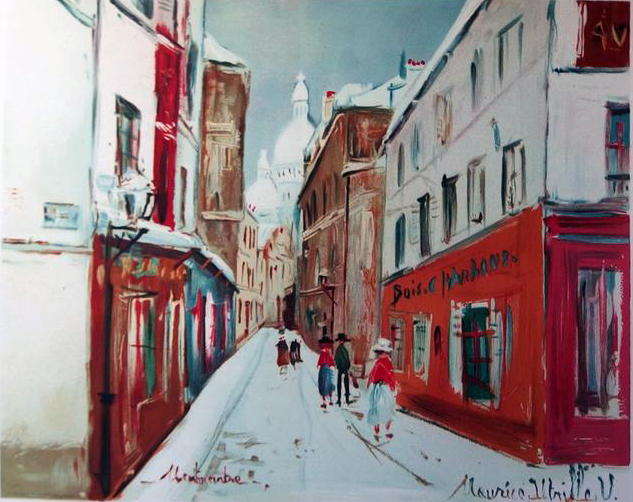
The other thing you need to know is that when I came back from Paris, I somehow got it into my head that I was going to buy an original Utrillo. It did not take long for me to come back to earth and realize I could not afford an original Utrillo. What I could afford, and only barely at that, was the work of a 20th century painter, also French, by the name of Antoine Blanchard. Blanchard, whose name came up in Google as, ‘if you like Utrillo but have no money you might also like,’ painted turn of the century Parisian street scenes. As he was born in 1908 and died in 1988, the scenes he painted were not live but were in fact inspired by postcards of the time.
I had never bought art before which did not feature dogs playing poker, so it took me quite a while to pull the trigger, but I did end up buying a beautiful nighttime snow scene.
Here it is:
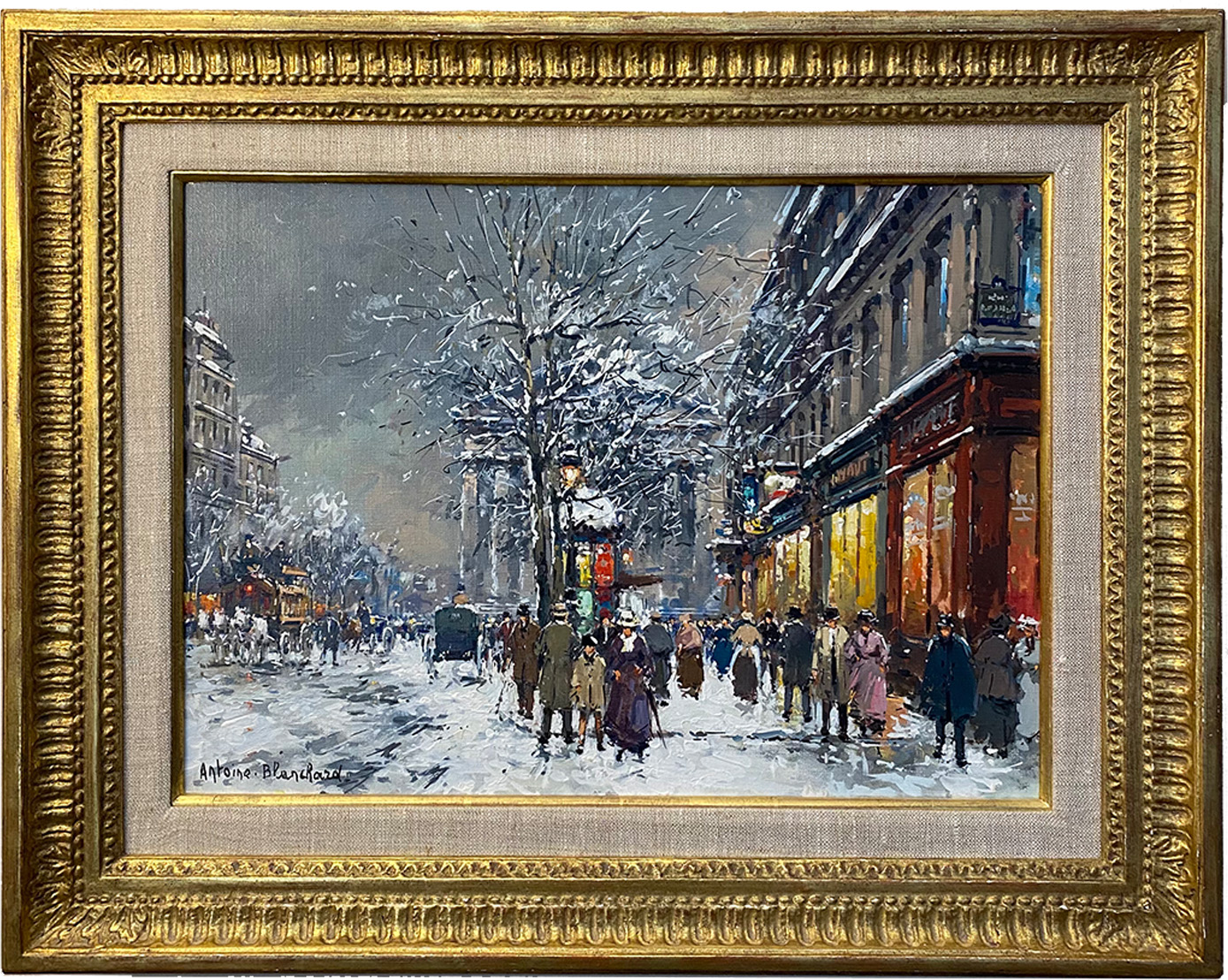
Ok, so I think you now have enough of the background.
I’m going to start telling the story. As I start to type, let me be honest and say it still does not have a radio in it.
I’m in my house in Boca and I’m working on the edits of the story Looking for Maurice, which is my story about Maurice Utrillo.
I get a text from my friend Allie and she tells me she is about to watch Coming to America. She makes it sound like someone is forcing her to watch it.
Now I have watched Coming to America many times. It is with Eddie Murphy and Arsenio Hall. I think it is very funny.
So I turn it on.
I tell Allie I am going to watch it.
Allie says that I already missed the topless scene.
I say I'm going to watch it anyway.
Like I said, I’ve seen it many times and I’m working on the story edit. So, I'm really only paying partial attention to the screen.
You know how you do when you are multi-tasking.
Which is why it is weird that I even noticed this.
If you’ve never seen Coming to America, then the only thing you need to know is that John Amos plays the father of the woman Eddie Murphy has a crush on. The Amos character owns a fast food restaurant called McDowell’s, which is an unabashed rip off of McDonald’s. There is a scene in his house when the camera focuses on a painting on the wall. The movie shows it in full for a second and I had to go back and forth with the remote in order to pause it at the exact right time.
Here is the picture I took of my TV screen.
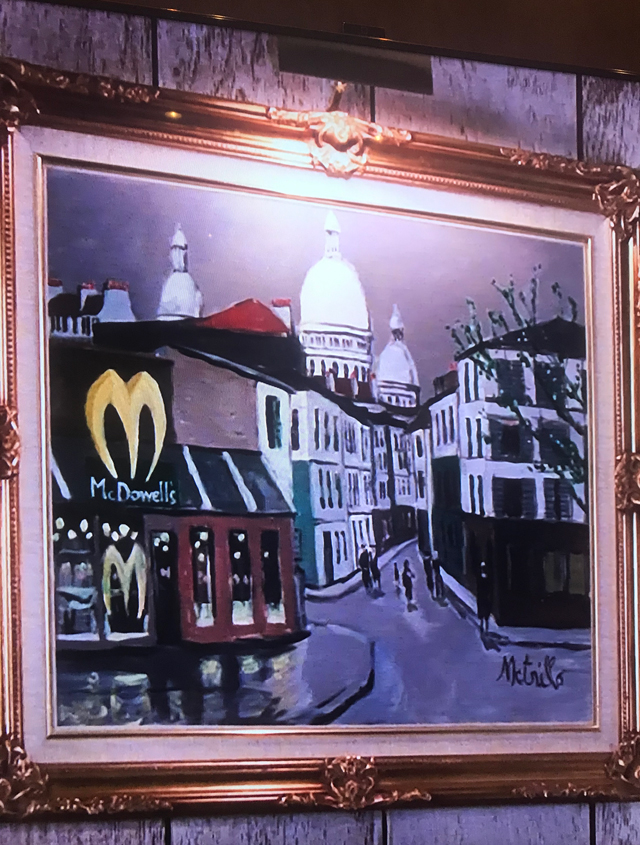
John Landis was the director of the movie. Here’s the joke he is making. Amos is a little bit nouveau riche. He has commissioned an artist to paint a Montmartre street scene and has added, in a manner we are supposed to think is crass and unsophisticated, the storefront design of his own restaurant - McDowell’s.
The painting is on the screen for no more than a second. Maybe two.
I look at it and, if not for the fast food sign, think it could be an Utrillo.
I don’t want to throw shade on Landis but it might have been funnier if he used a very recognizable impressionist painting.
But that’s just me.
Still, although you have to be paying attention, it is a funny bit.
Now go to the picture and zoom in on the signature on the bottom right corner.
Do you see it?
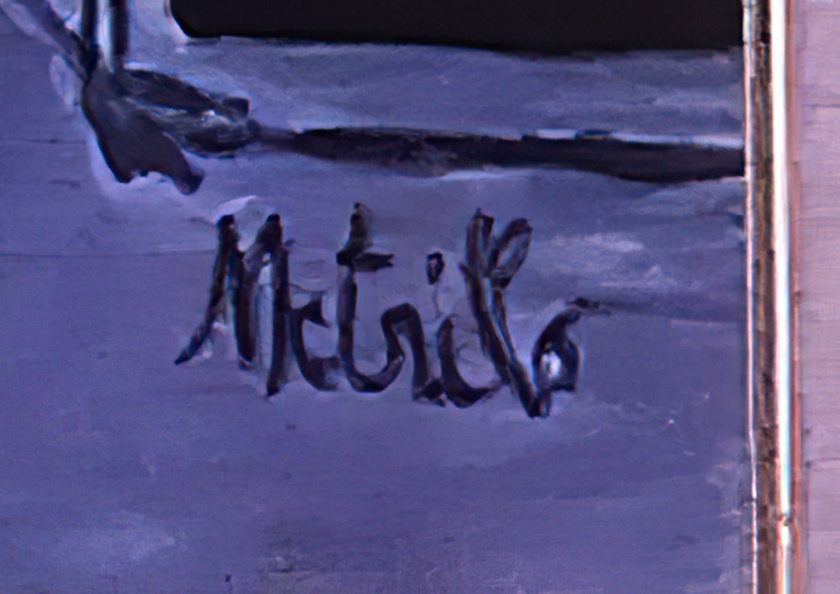
McTrillo.
Landis, or maybe the set designer, or maybe the prop person, has created a painting for the movie and has taken the joke so far that he has changed Utrillo to McTrillo.
A very minor French painter nobody who ever went to go see Coming to America in the theaters had ever heard of.
You can’t see the signature unless you pause the movie.
McTrillo.
On the day I am editing my Maurice Utrillo story.
The way I see it, and tell it, in 1988 John Landis included an inside joke in a movie that I, and only I, would understand in 2020.
Which is, in a word, eerie. So that’s the story.
No word of a lie.
For what it’s worth.
But it still doesn’t include a radio.
Which is a bit of a shame, because I think it is a pretty good story.
Now, I could lie. It would be easy to throw in a store selling vintage radios in Montmartre. Maybe owned by Utrillo’s great grandson. That could work. But I promised myself I would make the summit without the extra oxygen.
Where was I going to find a radio which was going to be a fit for this story?
So, I go to eBay.
I don't even know what I'm looking for.
It’s ridiculous.
I start searching through the listings of tube radios. I try tube radios manufactured in France.
But nothing that fits.
It is hopeless.
Maybe just a little oxygen I think to myself. Just a breath or two.
It is hopeless.
I’m ready to give up.
Even if I find something, I don’t even know what, how is it going to help the story. I can see we are almost at the end.
On a whim, in desperation, I type in Novelty Transistor Radios. A duck radio.
A windmill radio.
A, hand to god, Kraft Macaroni and Cheese radio.
And then I see it.
It is a painting which also works as a transistor radio. Manufactured by the Futura Corporation of St Louis Missouri.
Here, take a look.
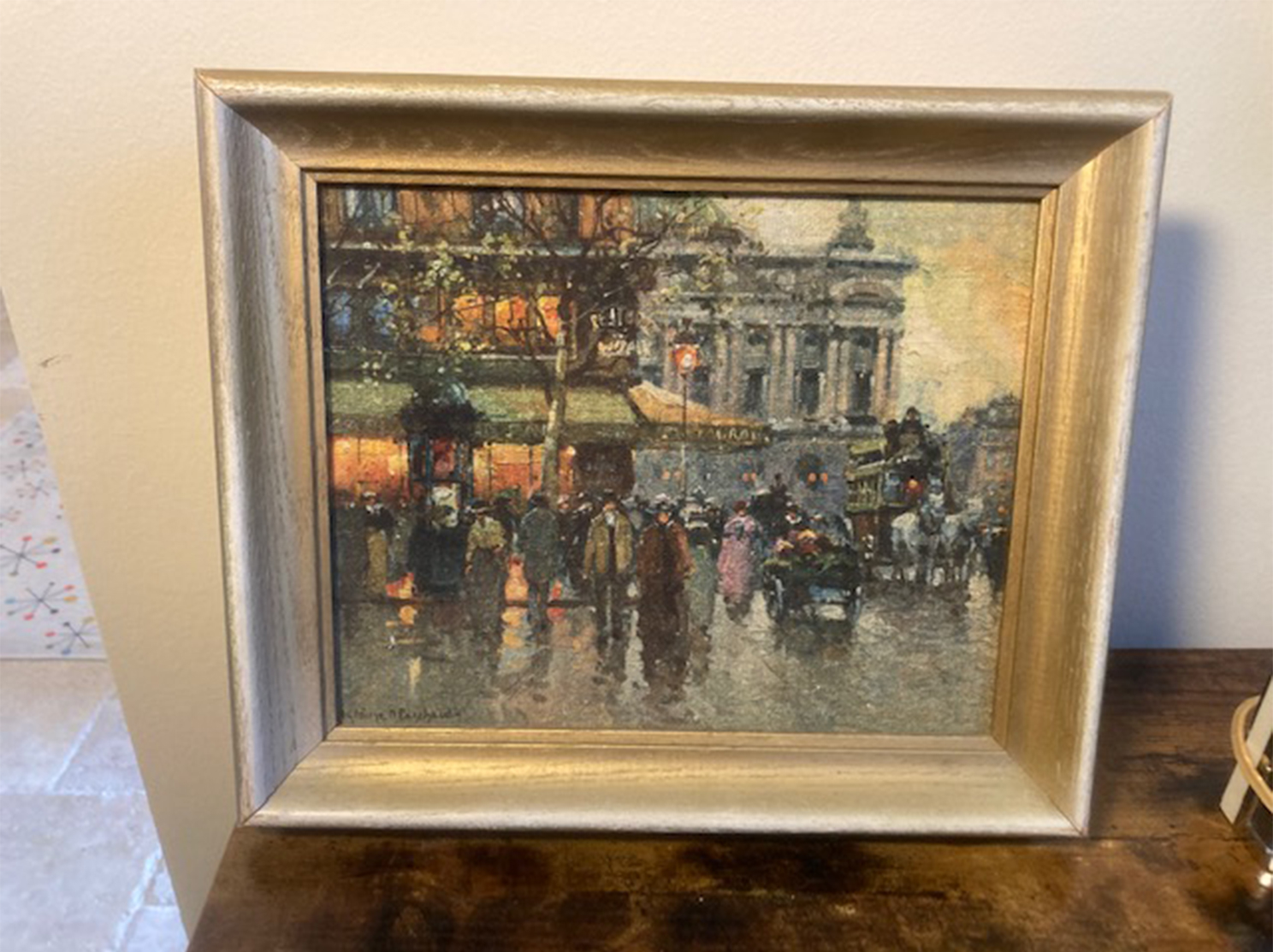
Damn if it isn't our old friend Antoine Blanchard.
So, I buy the radio.
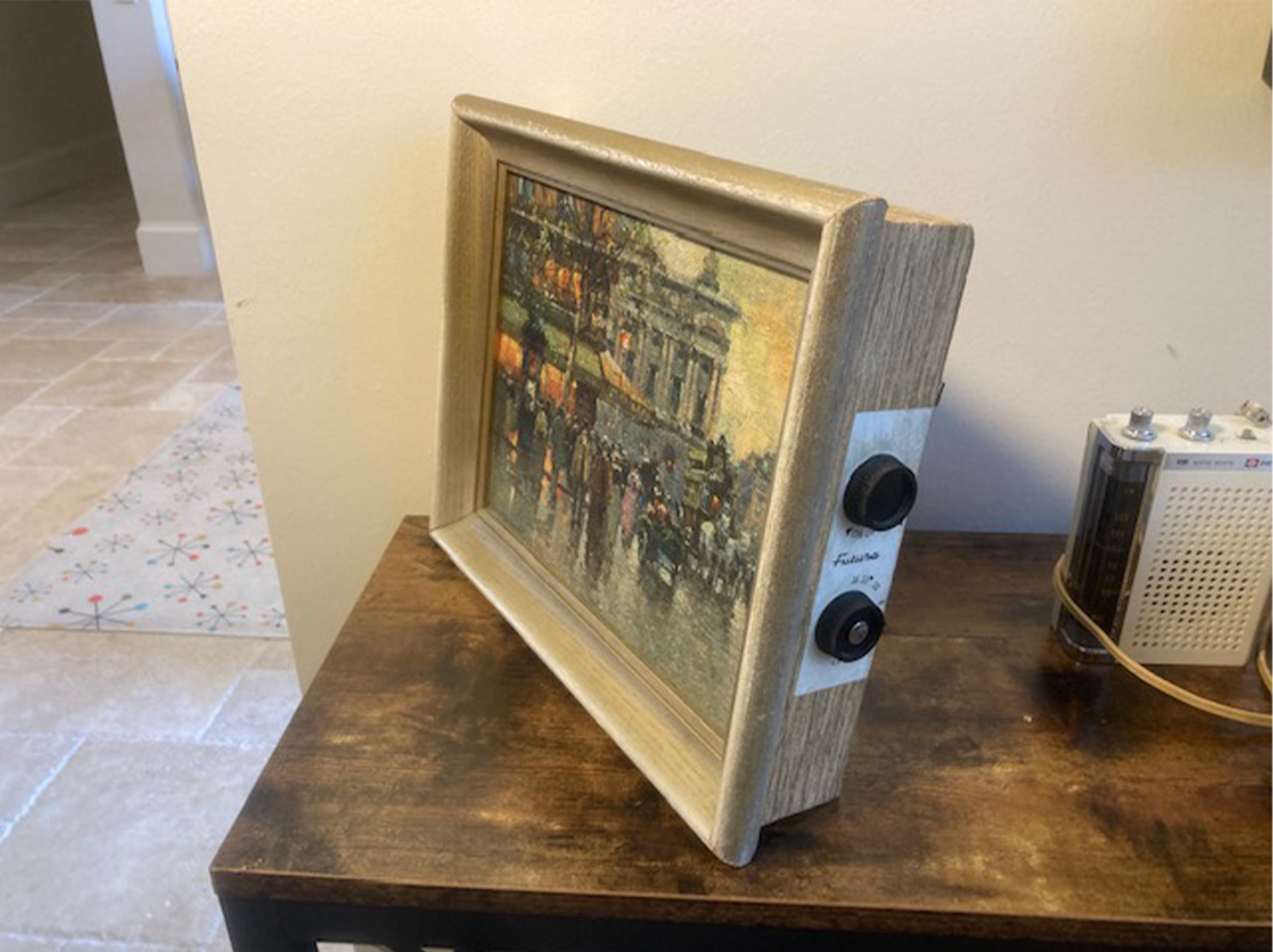
And I buy the batteries.
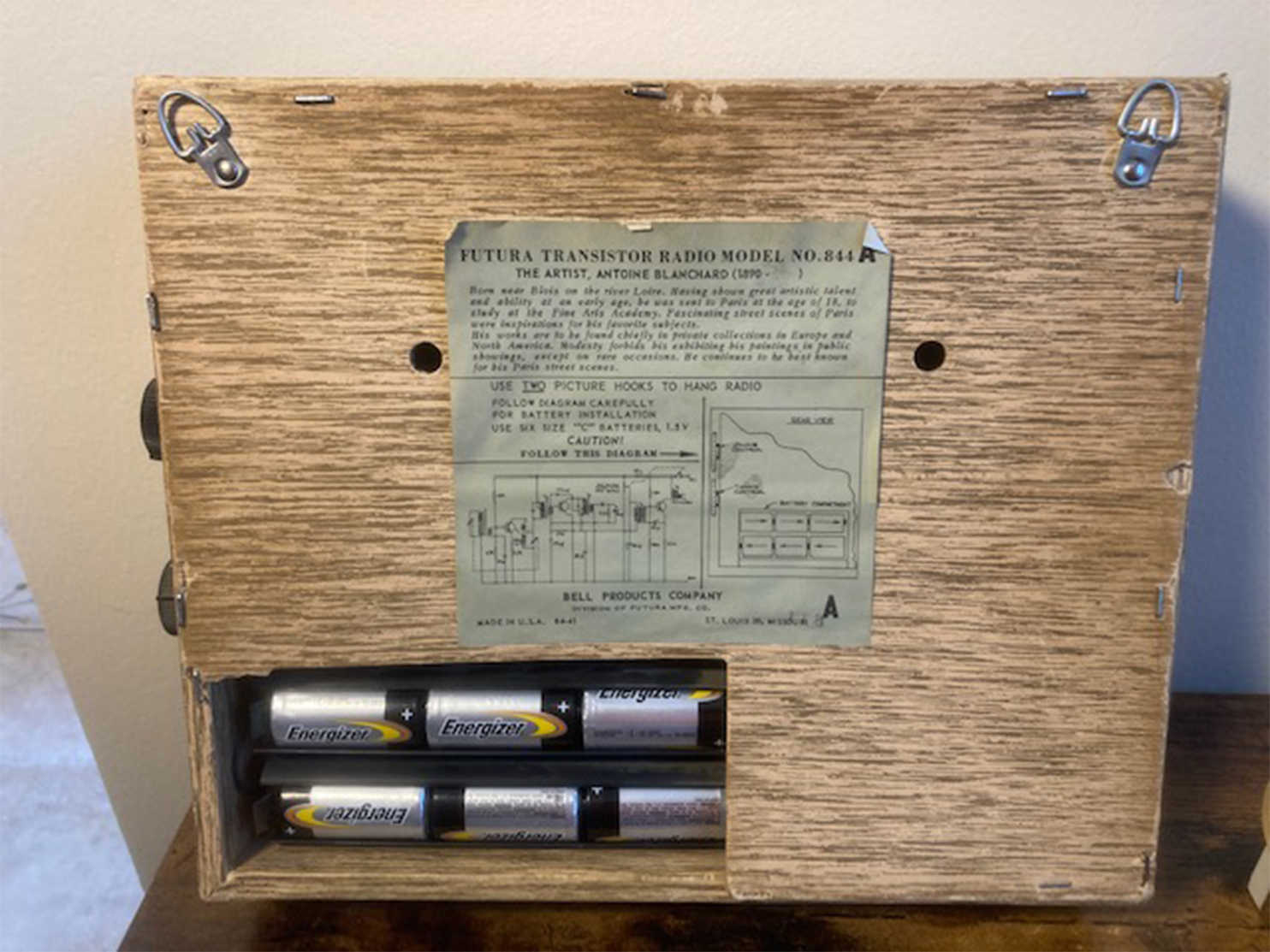
It plays great.
I put on Charles Aznavour singing La Boheme. It is a song about the good old days in Montmartre.
Then I go write my story.
The End